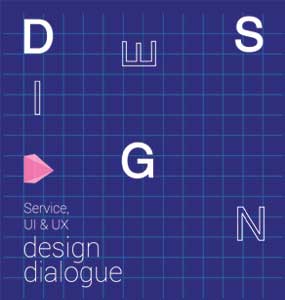
The playground has always focused on addressing complex challenges through a human-centered design approach. One of the ways in which we’ve done this, is by hosting various workshops that have been centered around design and design thinking strategies, in an effort to enable our community to create products and solutions that are designed after placing the affected stakeholders at the center of the problem.
A new series that we have recently started is the Design Dialogue Series. The field of Design is vast, and we have several local experts with years of experience in the different areas of design, who we are collaborating with, to host a series of talks and workshops. The first Dialogue in this series was centered around Service, UX and UI Design, with Ayesha Hasan, Hasan Habib, Gulraiz Khan, and Suleman Shahid serving as our panel of experts.
Ayesha has worked as a Design Consultant in Milan and Dubai, and recently moved back to Karachi last year, to join UBL’s Digital Design Lab as a CX Strategist. Heading UBL’s Design Lab was our second panelist, Gulraiz Khan, who is the Head of UBL’s Digital Design Lab and a former lecturer at Habib University and co-founder of the playground. The third speaker, Hasan Habib, is the founder of the experience design agency, Designist, where he enables companies to transform their business through design. Our final panelist was Suleman Shahid, an Assistant Professor in Computer Science at LUMS, where he directs the Computer Human Interaction and Social Experience Lab (CHISEL).
The Talk started with introductions by the speakers, who delved into their own experiences to talk about important concepts in design, like the Design Thinking Method, which, although in recent times has been commoditized and commercialised as a structured, step-by-step approach to innovation and problem solving, is in fact, quite an iterative process. Much like a lot of things in design, it’s value is initially difficult to see, and as put by Ayesha Hasan, it requires the designers to trust that there is a “method to the madness.” However, there is great value in the many steps that go into the true design process, from the initial research; which involves interviews, fieldwork, visual diaries and focus groups; to the different layers of prototypes, to feedback from the client, and then the task of incorporating that feedback back into the design process.
Ayesha and Gulraiz spoke about how the UBL Design Lab had incorporated this process in designing their Self Serve Digital Onboarding feature, which has helped improve the bank’s services by making them a lot more accessible. They did this by figuring out people’s paint-points, releasing the system in phases over several months, and constantly reflecting, iterating, and incorporating feedback back into the process – something that they said required a lot of patience, as well as a lot of “unlearning and relearning.”
The panelists spoke about the kinds of people they would prefer to hire for their teams, with Gulraiz and Hasan mentioning the need for a good balance between people well-versed in hard skills like programming, soft skills like adaptability and perceptiveness, and a combination of both. Suleman spoke about how, despite there being a particular methodology in the design thinking process, the unique outcomes depended on the value that each person brought to the table. This was echoed by Ayesha, who stated that collaboration was key, and that is what makes the UBL Digital Lab team work together so well was that despite each member having a different educational background, everyone understood the importance of sharing their knowledge, and the value and perspective that their differences brought to the table. “Design Thinkers” and “Problem Solvers” are broad terms that are often used to describe Service, UX and UI Designers, and what unites them is their shared trait of curiosity, and the eagerness to share knowledge from their own areas of expertise, with each other.
Suleman brought up some important points about the role of Artificial Intelligence (AI) in design, and the ethical conflicts that inevitably arise due to this involvement. While AI systems increase productivity and efficiency, they must be designed responsibly, so as to not let human biases creep in. The possibility of computers eventually replacing designers was also discussed.
Another important topic of discussion was the future of design. More and more organizations are recognizing the importance of utilizing design perspectives when creating products and services; something that was not very common until a few years ago. Everytime Ayesha starts a new project, she asks the question, “What won’t change in ten years?” She believes that stepping back from the problem at hand, and looking at the bigger picture is as important as addressing the current user pain points. Rather than just depending on what the user is explicitly asking for, it is equally important to focus on his intrinsic needs, which he is probably not even aware of, but those, which are unlikely to change over the next ten years. Using this assessment, would further enable designers to truly place the user at the center of the problem, and design a solution around his long term needs. As Henry Ford said, “If I had asked the people what they wanted, they would’ve said faster horses’.
A special thank you to Ayesha Hasan, for her help in writing this article